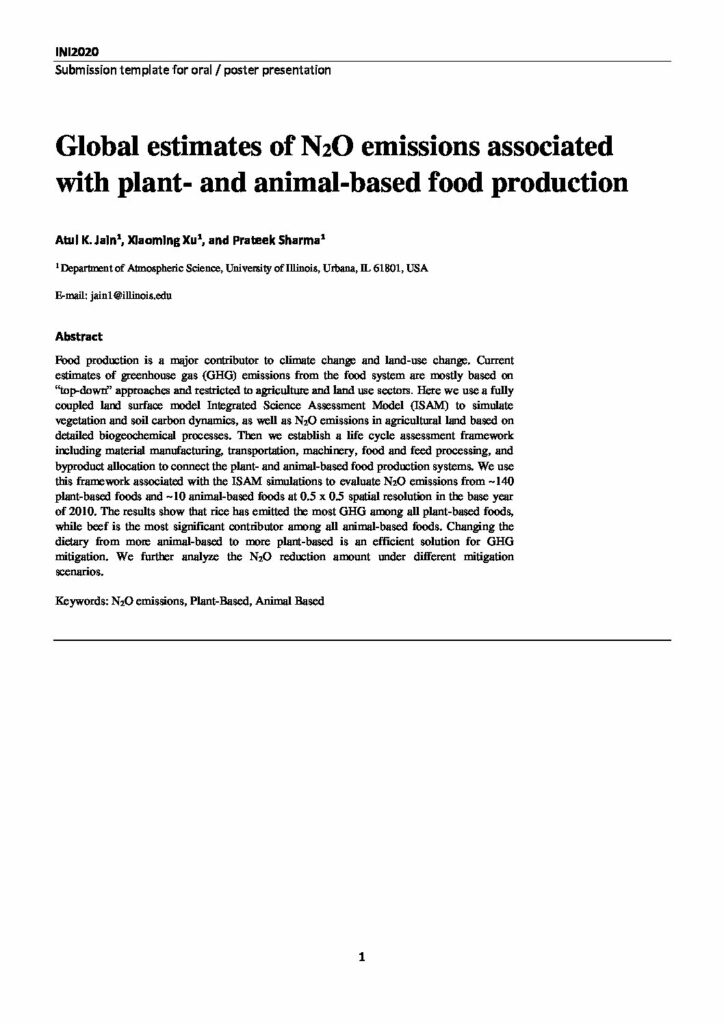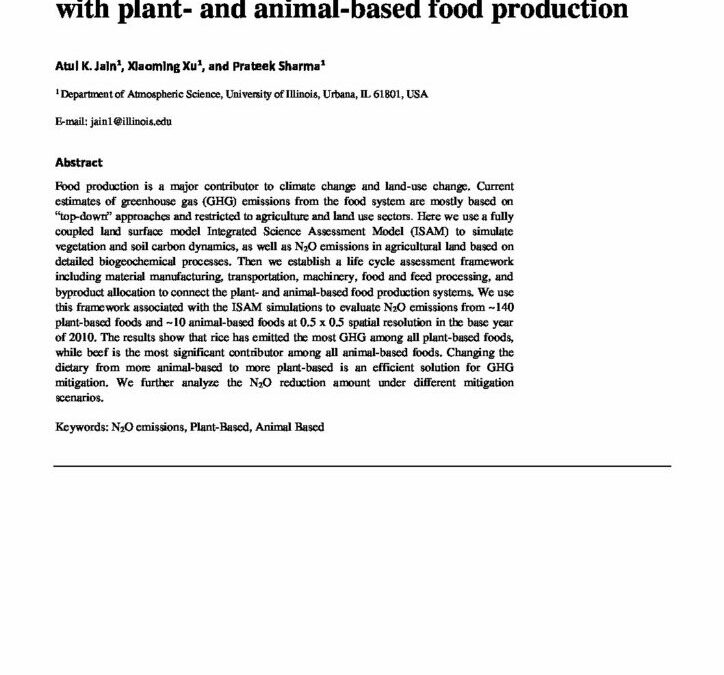Global estimates of N2O emissions associated with plant- and animal-based food production

Food production is a major contributor to climate change and land-use change. Current estimates of greenhouse gas (GHG) emissions from the food system are mostly based on “top-down” approaches and restricted to agriculture and land use sectors. Here we use a fully coupled land surface model Integrated Science Assessment Model (ISAM) to simulate vegetation and soil carbon dynamics, as well as N2O emissions in agricultural land based on detailed biogeochemical processes.
Then we establish a life cycle assessment framework including material manufacturing, transportation, machinery, food and feed processing, and byproduct allocation to connect the plant- and animal-based food production systems. We use this framework associated with the ISAM simulations to evaluate N2O emissions from ~140 plant-based foods and ~10 animal-based foods at 0.5 x 0.5 spatial resolution in the base year of 2010. The results show that rice has emitted the most GHG among all plant-based foods, while beef is the most significant contributor among all animal-based foods. Changing the dietary from more animal-based to more plant-based is an efficient solution for GHG mitigation. We further analyze the N2O reduction amount under different mitigation scenarios.
